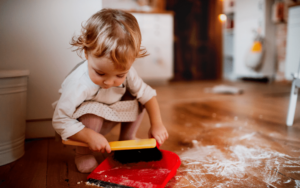By David Starshaw–Mathematics Teacher–High School
Do we want adolescents to be independent learners? The obvious answer is yes. Even if you are not quite sure what it means to be an ‘independent learner’, you probably have a sense that independence is a good thing we want our students to embody. Perhaps you think adolescents should be interdependent learners? A student who doggedly insists they are independent and so refuses to ask for help when they are stuck is not going to be very successful. Clearly, we want students who are neither too dependent, nor too independent.
One way we foster this is through student choice. A common phrase you will hear in Montessori circles is “freedom within limits.” And, here too, a balance must be struck. Montessori says “to let the child do as he likes when he has not yet developed any powers of control is to betray the idea of freedom” (The Absorbent Mind). But equally, not enough freedom to make good choices denies the opportunity for adolescents to make mistakes of self-management and learn from them. As teachers, our role is to allow students to fail, but not so badly that they do not get back up and learn from it.
As I have increasingly become more interested in educational research, I have learnt that students, as a rule, do not make good choices on how to best develop their learning. Students that are novices in the topic and struggling, will tend to choose more open-ended tasks that are easier to hide that they don’t know. Students that are becoming intermediate in the topic and understanding the basic ideas, will tend to choose familiar, short, closed questions rather than extending themselves into more open-ended problems. One of the roles of the teacher is to limit the student’s freedom to choose ineffective uses of their time so that they can make good choices and be successful. But, as before, there must be a balance to allow enough freedom without allowing too much.
I was recently surprised to learn that learning styles are still being discussed. This used to be a common way in which students were allowed choice. The educational research has been clear for a long time now that learning styles are not a thing. Or, as was published in 2008, “there is no adequate evidence base to justify incorporating learning styles assessments into general educational practice. Thus, limited education resources would better be devoted to adopting other educational practices that have a strong evidence base.” 1 This is as close to a ‘burn’ as it gets in research.
Student choice is a good and necessary thing. But, like fire, too much is harmful and puts unnecessary roadblocks in the way of progression and future success.
1 https://www.psychologicalscience.org/journals/pspi/PSPI_9_3.pdf

